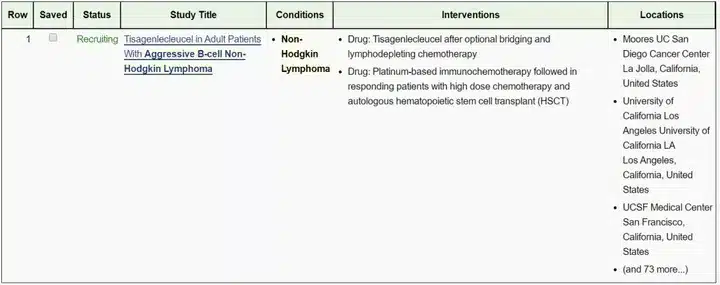Belinda Kymriah
Belinda Kymriah
On August 24, 2021, Novartis announced that in the BELINDA Phase III clinical trial, the use of Kymriah (CTL019, tisagenlecleucel) as a second-line treatment for patients with relapsed or refractory aggressive B-cell non-Hodgkin lymphoma (NHL) failed to meet the primary endpoint of event-free survival (EFS) compared to standard of care (SOC).

BELINDA Phase III Clinical Trial
BELINDA is a global, multicenter, randomized, open-label Phase III clinical trial, part of Novartis’ global Kymriah clinical development program. It aimed to evaluate the efficacy, safety, and tolerability of Kymriah compared to standard therapy in adult patients with relapsed or refractory aggressive B-cell non-Hodgkin lymphoma who had failed first-line immunochemotherapy with an anti-CD20 monoclonal antibody and an anthracycline-containing regimen.
Ideally, the study was expected to demonstrate that Kymriah could help patients with refractory disease or those who relapsed within 12 months after first-line therapy. This group of patients is particularly fragile. The study enrolled a total of 355 patients. The primary endpoint was EFS as determined by an independent review committee, and secondary endpoints included investigator-assessed EFS, overall survival, overall response rate, duration of response, time to response, and safety.
According to the ClinicalTrials database, the clinical trial included over 73 regions and countries worldwide, including China.

Although detailed data were not disclosed, Novartis stated that the safety data from this study were consistent with previous findings, and efficacy and durability were indeed observed. Novartis also mentioned that the company is developing next-generation, more effective CAR-T products.
Assuming you are a professional medical translator, particularly proficient in medical knowledge and English-Chinese translation, capable of accurately translating medical terminology, you are now required to use your expertise to provide a precise English translation of the above article. Medical terms must be accurately translated, and the semantics must be clear.
